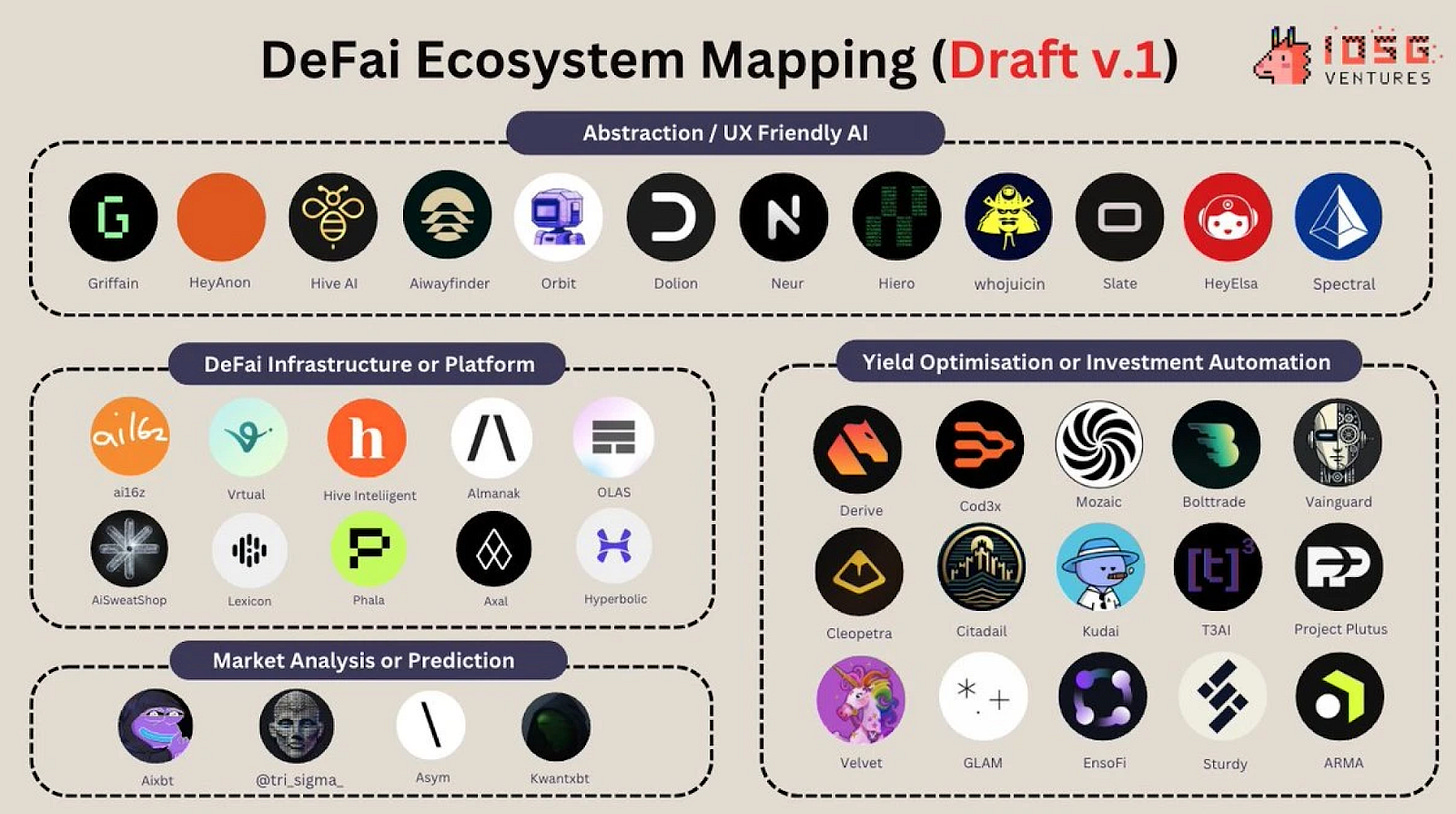DeFi 2.0: HeyAnon and Where DeFAI is Headed
The ChatGPT-ification of crypto is finally happening.
Hey everybody, Chris here. I’ve been traveling for the last few weeks and have been writing about it.
Since I last wrote on agentic progress in late 2024, a lot has happened in the crypto space. This will be the year for increasingly useful agentic systems, like Operator, though we’re still in the early stages of adoption.. Agentic systems still require hand-holding, but we’re seeing tools pop up that are actually reducing the complexity of using crypto. Having a system working for you 24/7 that actively monitors market conditions and intelligently executes trades on your behalf, without the risk of catastrophic mistakes, is here.
This is what piqued my interest so much with the project HeyAnon. I happened to catch Daniele Sesta speaking on a Spaces where they laid out the vision for the project and what they’re hoping to achieve with HeyAnon. It really caught my attention and made me genuinely excited.
Before diving in, let’s define DeFAI. This acronym has been frequently discussed on X in recent months, but some readers might be unfamiliar.
What is DeFAI?
DeFAI (Decentralized Finance AI) integrates artificial intelligence into DeFi to improve usability, efficiency, and accessibility. It leverages NLP for simpler interactions, automates trading and yield optimization across blockchains, and analyzes data for informed financial strategies. However, it remains an emerging field with challenges in transparency, security, and algorithmic trust.
VS DeAI –
DeAI (Decentralized AI) distributes AI computation, model training, and inference across blockchain networks instead of relying on centralized servers. It enhances transparency, censorship resistance, and security by leveraging decentralized infrastructure. However, it faces challenges in efficiency, cost, and trust in decentralized model execution.
HeyAnon is not the only DeFAI project, there is significant overlap with how this is being spoken about online, particularly surrounding deAI. Other major competitors to HeyAnon include Griffain and Orbit, all of which have associated crypto tokens. However, many people on X have noted that they prefer HeyAnon’s interface and UX compared to other similar offerings, and after some usage I completely agree.
HeyAnon in a Nutshell
Daniele laid out the vision for this project very succinctly last week. Simply put, they noted the rate of adoption with ChatGPT and how it has so drastically disrupted using Google for search. It became clear in late 2022 that using natural language to perform actions or queries is the obvious path forward, and this has been validated across multiple use cases, from Cursor to Figma and various other design interfaces implementing the same thing. Natural language is the path forward, language models are the bridge, and abstracting away complexity is the future.
This has been the obvious progression for a long time, but up until this recent push with DeFAI, we weren’t seeing this really taking hold in the crypto space. DeAI for most of 2024 focused on quite literally decentralizing AI inference and compute, which is still important and interesting, but I think utilizing NLP (and better UI/UX) in general will, along with sensible regulation, lead to faster adoption and DeFi usage in the near-future.
To be clear, on the spectrum of agentic usage, I think tools like HeyAnon will be useful now, in the present moment, before we move towards fully autonomous agentic systems (where UX won’t matter as much).
So, imagine this: you type, ‘Swap 100 USDC for WBTC if the price drops below $50k on Arbitrum”. Boom – the system handles verifying market conditions and ultimately executing the trade. Simply and cleanly translating requests into precise technical commands is satisfying to watch and use. To note, the protocol interacts with standard EVM wallets, and you can have it create one for you when you link your Telegram account (if you choose to do so). Or, you can import a wallet you’re already using.
Unlike some other projects, HeyAnon has well-structured documentation. It clearly outlines the tool’s core components and key features.
Core Components:
A conversational AI interface that processes user requests through natural language
A system for interacting with multiple DeFi protocols through unified APIs
An extensive data aggregation system pulling from:
Social channels (Twitter, Discord, Telegram)
Development activity (GitHub, GitBook)
On-chain metrics
Price feeds (Pyth)
Key Technical Features:
Cross-chain functionality via LayerZero for bridging operations
Integration with DEX aggregators (0x, Odos, OpenOcean) for optimal swaps
Direct protocol integrations with platforms like Aave, Spark, and GMX
Price & gas monitoring for transaction optimization
Conditional execution based on market triggers
HeyAnon consists of two components: Anon, an AI assistant for DeFi automation, and Gemma, an AI similar to Grok 2 but focused on crypto. Anon works exactly like how you’d expect, and all things considered. Users pay fees for token swaps and cross-chain transactions through integrated DEX aggregators (like 0x and OpenOcean). Premium features (which I’m unclear on now) will be accessible through staking ANON. The core processing for the AI components of this run through a centralized layer, they are not using something like Morpheus network or Bittensor, although that would be an interesting partnership.
Perhaps, in time, this will develop to a point where the infrastructure will be fast enough through decentralized inference solutions to justify the cost. The documentation isn’t specific on what language model is being used – perhaps it is a fine-tuned variant of Llama 3.2 or something. Anon (when you ask it) claims it is running an OpenAI model, but I’d assume that would be too expensive to run if it was utilizing OpenAI’s APIs.
I really like Gemma. Like with Grok, you can clearly see where the sources are coming from, and it provides useful, actionable information. Being able to quickly aggregate info from various Discord servers, X, and Telegram is worth the usage alone. Perhaps there are other tools that are useful, but I haven’t come across them.
For more step-by-step usage and digging into how HeyAnon works and what protocols and functions are supported, I would encourage readers to search on X and dig into HeyAnon’s docs.
Future Protocol Stacks and Security
DeFi craves broader adoption. It is going to keep evolving to be more AI-native. Natural language interfaces will remain important, because even once agentic systems are much more independent, people will invariably desire to check on what their bots are up to.
Stacks will start to look like this:
Base Layer:
Traditional DeFi protocols (Aave, GMX, etc.)
Cross-chain infrastructure (LayerZero)
Oracle networks, price data (Pyth)
Intelligence Layer:
AI interfaces (HeyAnon)
Data aggregation and analysis (HeyAnon does this)
Risk assessment systems (This can be done independently using Gemma)
Agent Layer:
Autonomous trading agents (simpler, not personalized)
Portfolio management AIs
Social/sentiment bots
User Layer:
Personalized AI assistants (fine-tuned/AI models using your data, having additional context)
Natural language interfaces (tying it all together)
There’s a large degree of overlap between these layers (you can imagine a portfolio management AI that has personalized context), and it is entirely possible that new solutions will be created soon that check most of the boxes between intelligence → agent → user. There’s interoperability between these layers, and I think these layers will become reduced/simplified as we move forward.
As far as security and auditing is concerned, I think chain-of-thought reasoning being captured on-chain could be useful. Different users utilizing these agentic systems are going to have different ideas of what risk looks like, and many questions remain that are still somewhat unclear:
How do you audit an AI's decision-making process for crypto?
What happens when AI agents from different protocols interact in unexpected ways? Are creators always responsible?
What are the systemic risks of having too much capital controlled by similar AI models?
These are meant as open questions, and I’d like to write on these topics soon.
For now, full autonomy isn't here yet—HeyAnon is primarily focused on making DeFi more accessible. However, in the near future, I expect solutions where you simply provide an AI model with a wallet and tell it to “make money.” This shift will likely arrive sooner than expected, and I anticipate on-chain AI-driven trading activity to yield surprising results.
Moving Forward
With tools like Operator, Grok 2, and Perplexity really growing into their own, it has become clear that many of the reservations and hesitations surrounding LLM usage are clearing up. Showing reasoning and sources makes all the difference, and this is a universal truth across the board for AI systems regardless of where they are used.
I’m excited to see healthy competition in the DeFAI space, and I think one of these tools may get to a point where it reaches broader adoption. Having a true agent buddy that can execute things on your behalf and be your ultimate wingman is where we’re heading.
HeyAnon is a great example of how AI is shaping the next evolution of DeFi. As agentic AI systems become more powerful, we’ll see tools like this become indispensable – not just for expert traders, but for everyday users entering the space.
Talk soon,
- Chris








